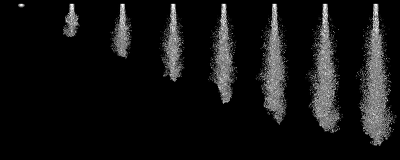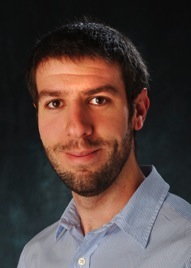Welcome to CMES
 |
Atomization of Turbulent Liquid Jet |
 |
Direct numerical simulation of a turbulent spray flame |
Energy will be one of the defining issues of this century. With record-high gas prices and increasing concerns about man-made climate change, the shift towards cleaner and more efficient energy systems is becoming pressing. Recently, computational methods have clearly emerged as a novel powerful tool that can help create cleaner, more efficient energy conversion devices. The predictability of numerical models is improving rapidly, and future research will further increase the accuracy and efficiency of these computational tools, ultimately leading over the next decade to the generalization of computer-aided design and optimization as a fundamental engineering tool. Only by seizing these new opportunities will we successfully achieve the necessary transition towards cleaner, higher performance technologies.
To bridge the gap between today's simulations and realistic engineering applications, our goal is to design new physical models, and combine them with novel numerical methods designed for high performance and high scalability, so that large-scale computing resources can be fully exploited to perform world-class parallel simulations of concrete engineering problems.
Current research focuses on turbulent atomization of liquid fuel, turbulent dispersion, evaporation, and combustion of sprays, biomass thermoconversion in fluidized bed reactors, direct steam generation solar power, and advanced numerical methods for the simulation of complex, turbulent, multiphase, and reactive devices.
Biosketch

OLIVIER DESJARDINS is currently an Assistant Professor in the Department of Mechanical Engineering at the University of Colorado at Boulder. He received a Master of Science in Aeronautics and Astronautics from ENSAE (Supaero) in Toulouse, France, and a Master of Science in Mechanical Engineering from Stanford University in 2004. He graduated from Stanford University in June 2008 with a Ph.D. in Mechanical Engineering. His doctoral research on numerical methods for accurate simulations of reactive multiphase turbulent flows and on liquid atomization was performed under the guidance of Prof. Heinz Pitsch at the Center for Turbulence Research.

